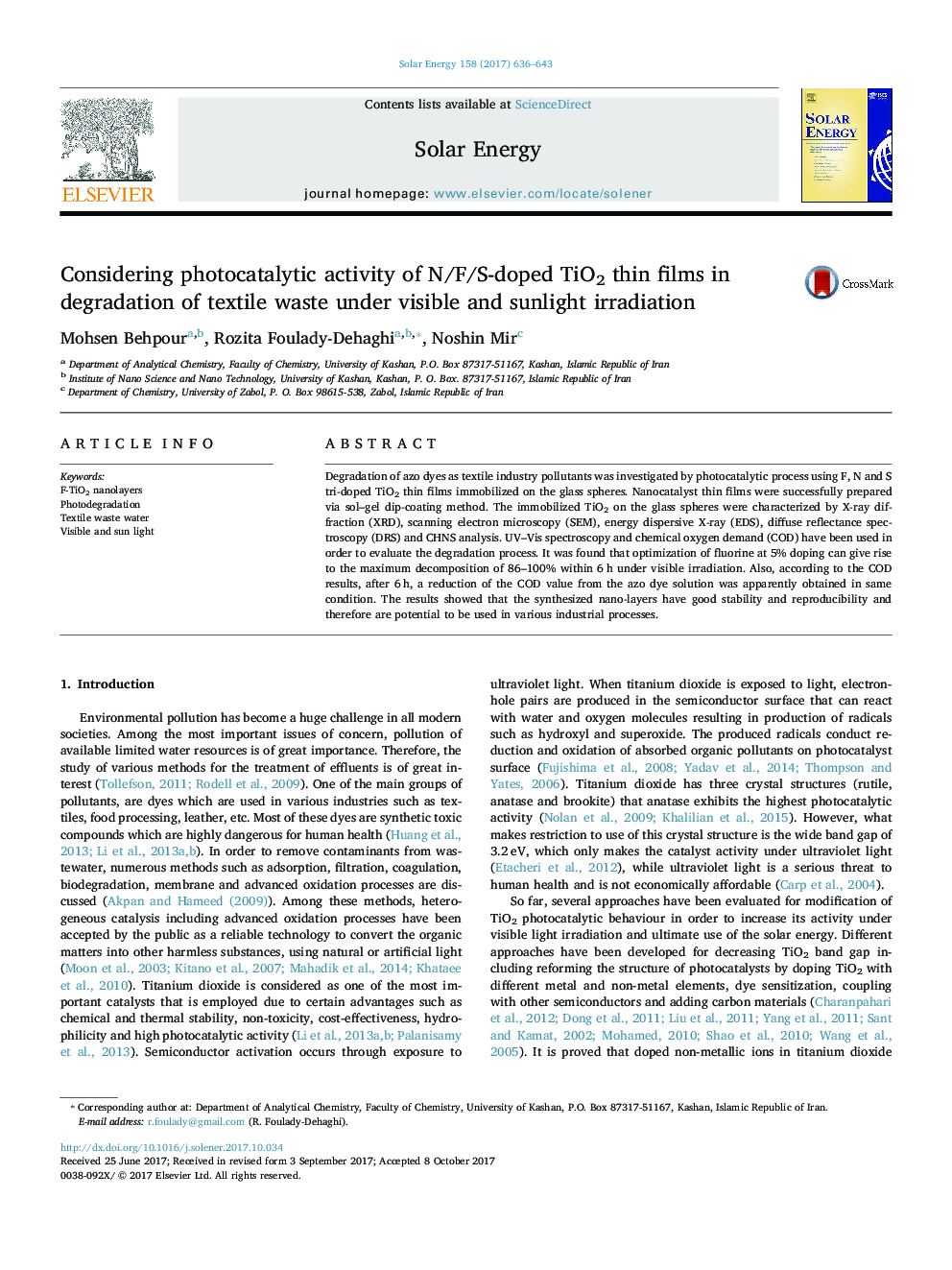| Article ID | Journal | Published Year | Pages | File Type |
|---|---|---|---|---|
| 5450564 | Solar Energy | 2017 | 8 Pages |
Abstract
Degradation of azo dyes as textile industry pollutants was investigated by photocatalytic process using F, N and S tri-doped TiO2 thin films immobilized on the glass spheres. Nanocatalyst thin films were successfully prepared via sol-gel dip-coating method. The immobilized TiO2 on the glass spheres were characterized by X-ray diffraction (XRD), scanning electron microscopy (SEM), energy dispersive X-ray (EDS), diffuse reflectance spectroscopy (DRS) and CHNS analysis. UV-Vis spectroscopy and chemical oxygen demand (COD) have been used in order to evaluate the degradation process. It was found that optimization of fluorine at 5% doping can give rise to the maximum decomposition of 86-100% within 6â¯h under visible irradiation. Also, according to the COD results, after 6â¯h, a reduction of the COD value from the azo dye solution was apparently obtained in same condition. The results showed that the synthesized nano-layers have good stability and reproducibility and therefore are potential to be used in various industrial processes.
Keywords
Related Topics
Physical Sciences and Engineering
Energy
Renewable Energy, Sustainability and the Environment
Authors
Mohsen Behpour, Rozita Foulady-Dehaghi, Noshin Mir,
